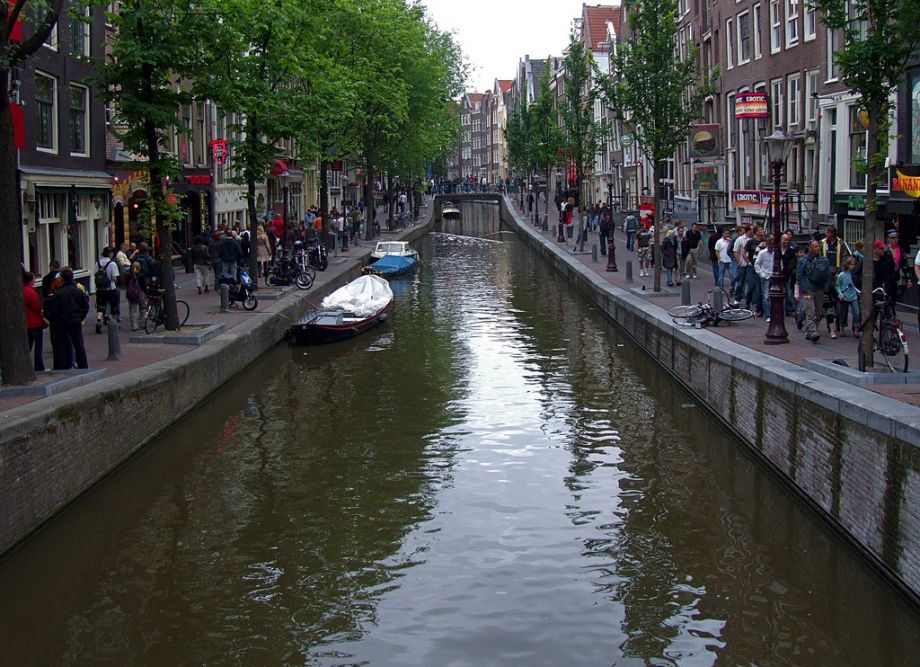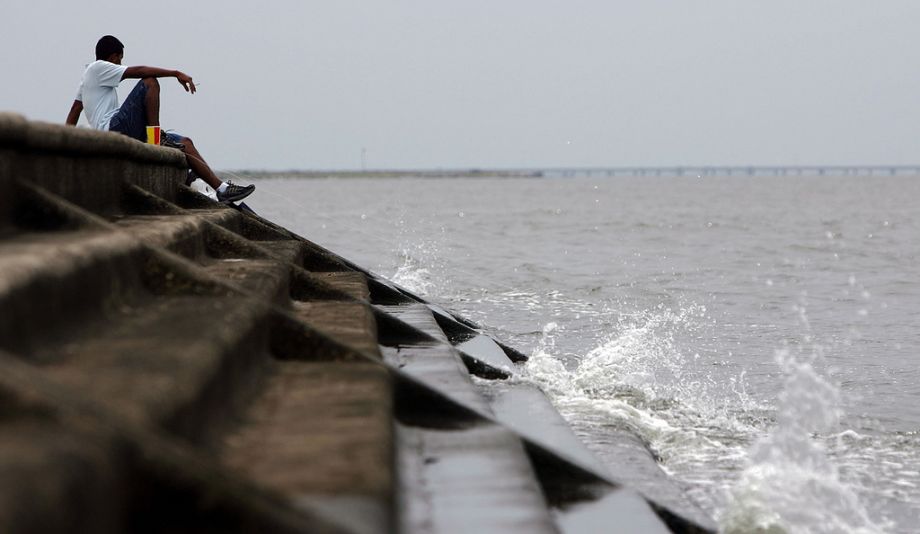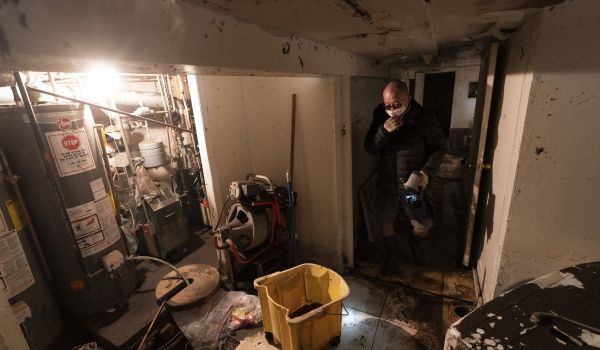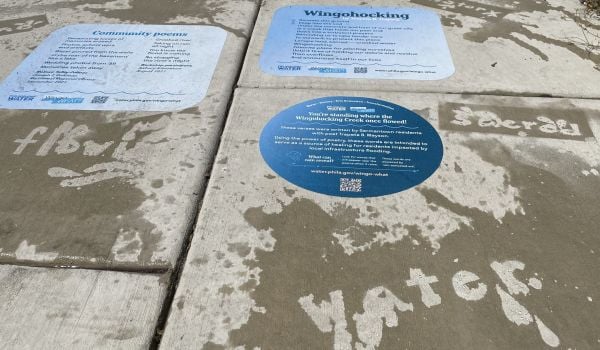For many New Orleans residents who lived through the aftermath of Hurricane Katrina, the specter of another levee breach will always feel an existential threat.
But this city is also imperiled by another, more persistent form of floodwater that comes from the sky, in the five feet of rain that falls on New Orleans each year. These periodic floods don’t often claim lives, but their cumulative effects – the closure of travel routes, property damage, high flood insurance rates, the disruption of daily business, and even the mass migrations of cars to parking spots in elevated areas of the city – put stress on urban systems and the city’s basic functionality.
The flip side of this problem comes from the city’s efforts to mitigate these effects. As it currently operates, New Orleans’ water management system relies on a massive arrangement of pumps to send water out of the city limits, mostly into adjacent Lake Pontchartrain. Doing so deprives the deltaic soil on which the city sits a crucial element—water—which causes the land to sink, and, among other things, the ground to deteriorate beneath our roads and buildings.
These dueling dilemmas, in which the city is simultaneously both too wet and too dry, have prompted officials and residents to reconsider New Orleans’ approach to handling storm water.
In September, a team of experts from New Orleans and the Netherlands presented the Greater New Orleans Urban Water Plan, a proposal that cost $2.5 million and took years of work to configure. A product of Waggonner & Ball Architects, the plan’s fundamental assertion is simple: Rather than pump rainwater out of the city, New Orleans should retain it in an interrelated series of canals, urban wetlands, ponds and other bodies of water that will require less work from the pumps, help keep New Orleans’ sponge-like soil flush, decrease flooding and provide opportunities for handsome water-related architectural amenities and public spaces.
New Orleans planners have collaborated with Dutch advisors since the early days of the post-Katrina era—27 percent of the Netherlands sits below sea level, an area that’s home to more than 60 percent of its population, and the country’s integrated water management system is unparalleled. Amsterdam and Rotterdam are strung with elongated parks extending along waterways, canals that allow for water to flow naturally and other accommodations for collected rain. When Dutch members of the team that eventually created the Urban Water Plan first took a tour of New Orleans, they were shocked at the dearth of visible water in a city surrounded by it.
“How can you be a water city with no visible water?” New Orleans architect John Klingman, who accompanied the Dutch visitors, recalls them asking. Klingman is the Favrot Professor of Architecture at Tulane University, where since 2009 he has participated in a series of “Dutch Dialogues” workshops, an outgrowth of the collaboration between Dutch and Louisiana partners who created the Urban Water Plan. A variety of specific proposed components of the plan emerged from these workshops, including “blueways” that extend bayous down long urban corridors, floating streets, wetland habitats that naturally filter rainwater to fill swimming pools and other cutting-edge hydro-centric alternatives to sloshing tons of rain from the city into the lake.

Amsterdam’s canals help mitigate the effects of urban flooding by allowing water to flow safely through the city, rather than into it. Photo credit: Steve Ballegeer via Flickr
One great aspect of the water plan, Klingman notes, is that each of its parts can be implemented individually, and that each affixes seamlessly with the rest of the proposed plan and the city’s current water management system. This is a practical aspect more than anything, since no firm strategy exists to pay for the $6.2 billion proposed plan and it will need to be implemented piecemeal. Although parish- and city-level politicians, sewage and water board officials, and Greater New Orleans, Inc. (the regional economic development association that paid to complete the plan) have expressed enthusiasm for it, everyone involved admits it will require a multifaceted stream of public and private financing they have yet to begin to drum up.
Their pitch: predictably, that the Urban Water Plan will spur economic development. From building hospitals to tearing down highways and housing projects, economic development is the go-to argument these days when trying to push through large-scale public projects in New Orleans. The city, after all, is poor, and good jobs are scarce—so, the thinking goes, it can always use a fiscal boost. Greater New Orleans, Inc. CEO and president Michael Hecht claimed at the plan’s unveiling that it would deliver $22 billion in economic benefits over the next 50 years, including an $8 billion reduction in repetitive flooding costs, $609 million in reduced flood insurance premiums, $183 million in increased property values and $11.3 billion in economic development.
Renia Ehrenfeucht, associate professor of urban studies at the University of New Orleans, finds that last figure dubious. “It’s not obvious that any of this would stimulate rapid growth,” she says.
Ehrenfeucht says that large-scale public works projects often claim they will result in dramatic economic impact, but that these claims are often trumped up. The two primary ways in which projects such as this are supposed to stimulate the economy are by creating jobs related to construction and by attracting businesses and consumers to revitalized urban areas. Without a large injection of money and construction activity—which seem unlikely at this point—Ehrenfeucht says, the number jobs the plan creates will be relatively insignificant.
Furthermore, despite the logic widely accepted in some circles that urban improvement attracts economic development, she says there is little evidence to back this up. She notes that most cities have comparable bundles of urban amenities, making it difficult for one to meaningfully stand out above all others to attract new businesses and monied residents. She cites even relatively “successful” developments such as that of the Baltimore waterfront as examples of how the logic falls short.
“Is the new waterfront a nice public space? Absolutely,” she says. “Is it changing urban growth patterns in Baltimore? No.”
Squeezing money for the water plan from local governments that are already spread thin would require them to shift discretionary funds from public housing, direct services, education and other interests that work toward the public good and/or are supported by strong political contingents. As one reporter noted, floating streets and some of the plan’s other components “may strike New Orleanians just hoping to see a few potholes fixed as a tad exotic.” One would expect these sorts of challenges if trying to implement the water plan in any city.
But a major hurdle distinct to New Orleans for planners vying to introduce canals and ponds prominently into the cityscape is that many New Orleanians are simply made uncomfortable by water. This characteristic—which Klingman chalks up to “hydrophobia”—was present in New Orleans before the 2005 levee breaches, but was certainly exacerbated by them.
“People associate water with negative conditions,” Klingman says.
New Orleans, a majority-black city, is among those in the U.S. with the highest rate of people who don’t know how to swim—around 70 percent of African-American children do not know how, the result of a complicated and racist history. While ground subsidence and frequent flooding are good reasons to rework the city’s stormwater management system, this fact brings to light the bouquet of demons from New Orleans’ past that linger large today and will shape its contemporary residents’ slow march toward sustainability.

Nathan C. Martin is a writer and editor in New Orleans. He is the author of the Wallpaper* City Guide to New Orleans and his writing has appeared in McSweeney’s, Oxford American, The Believer, VICE, and other places. He is the founder and editor of Room 220: New Orleans Book and Literary News as well as its related literary event series. From 2008 – 2010 he was associate publisher and web editor of Stop Smiling. He is currently at work on a book about Wyoming, his home state.










_1200_700_s_c1_600_350_80_s_c1.jpg)






